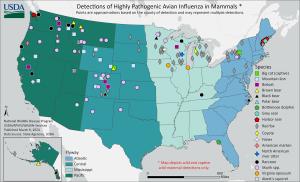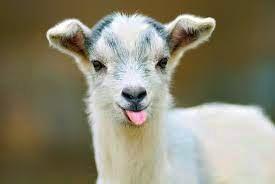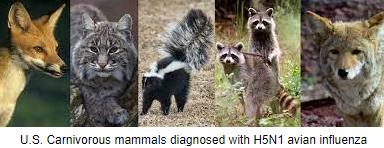 In a March 18th report to the World Organization of Animal Health, the USDA confirmed H5N1 HPAI in a herd of goats diagnosed in late February. Five of ten neonatal affected animals died out of 165 in the herd. Goats and poultry were in biological contact and shared a common water source.
In a March 18th report to the World Organization of Animal Health, the USDA confirmed H5N1 HPAI in a herd of goats diagnosed in late February. Five of ten neonatal affected animals died out of 165 in the herd. Goats and poultry were in biological contact and shared a common water source.
 The implicated multi-species farm in Stevens County, in western Minnesota recorded a February 27th outbreak of H5N1 among diverse poultry species including 23 chickens, with the infection presumed to have been introduced by wild bird reservoirs.
The implicated multi-species farm in Stevens County, in western Minnesota recorded a February 27th outbreak of H5N1 among diverse poultry species including 23 chickens, with the infection presumed to have been introduced by wild bird reservoirs.
It is a matter of record that numerous mammalian species are susceptible to H5N1 including marine mammals and farmed mink where evident animal-to-animal contact was responsible for transmission of infection. In addition, terrestrial mammals, mostly scavenging carnivores, have been infected in the Americas and Europe possibly due to consuming dead birds.
It will be important for the USDA National Veterinary Services Laboratory to determine the type of mutations that have occurred in isolates from the farm that increased susceptibility of goats and possibly other mammals to H5N1. The antibody status of the herd should also be investigated given the low attack rate but a high case fatality rate.

This incident emphasizes the need for all people coming into contact with live poultry to receive the current multivalent seasonal influenza vaccine to prevent a possible recombinant event between avian and human viruses that could result in a zoonotic strain of avian influenza.